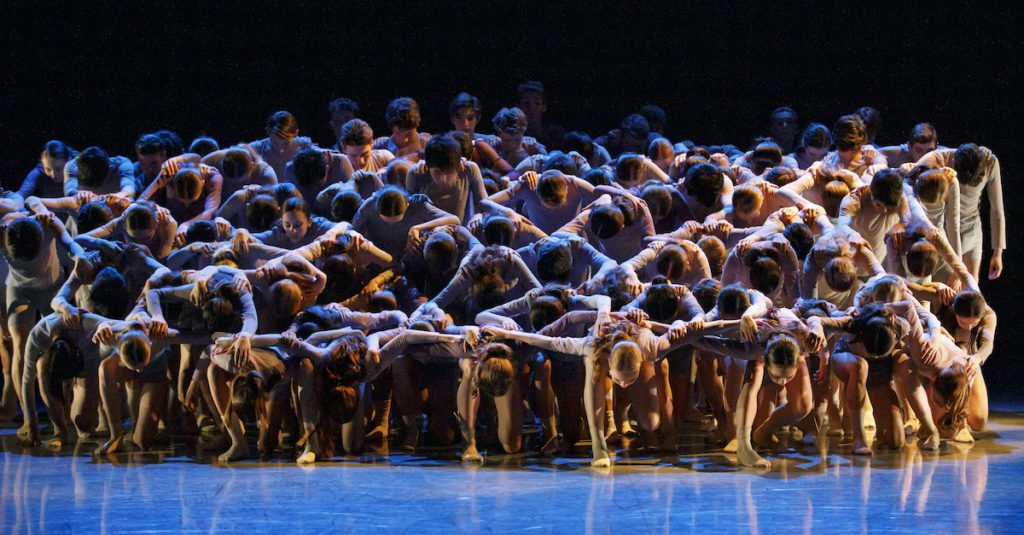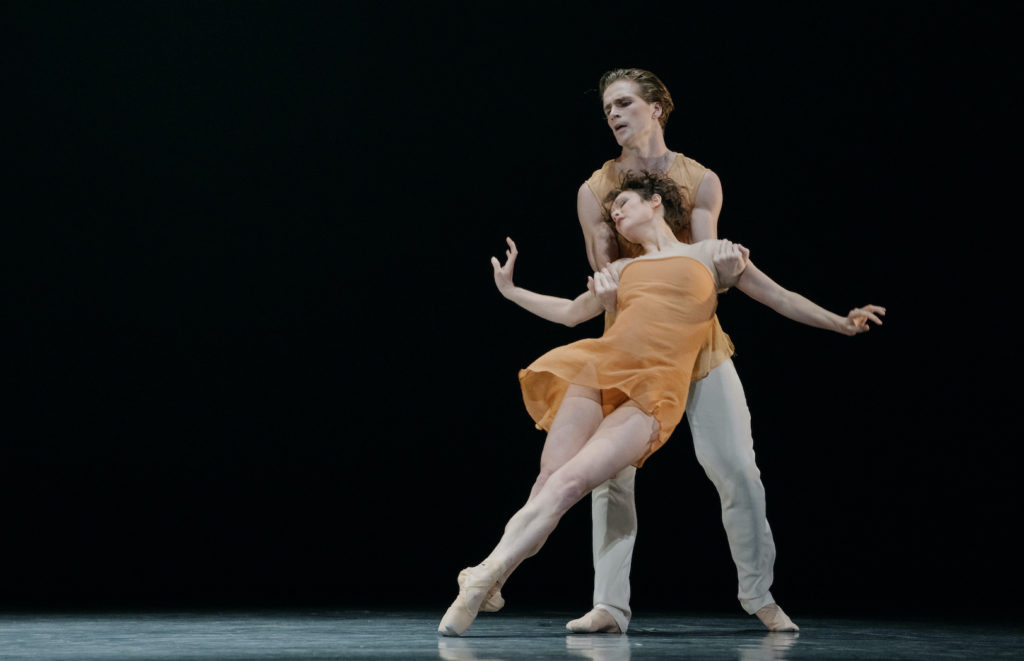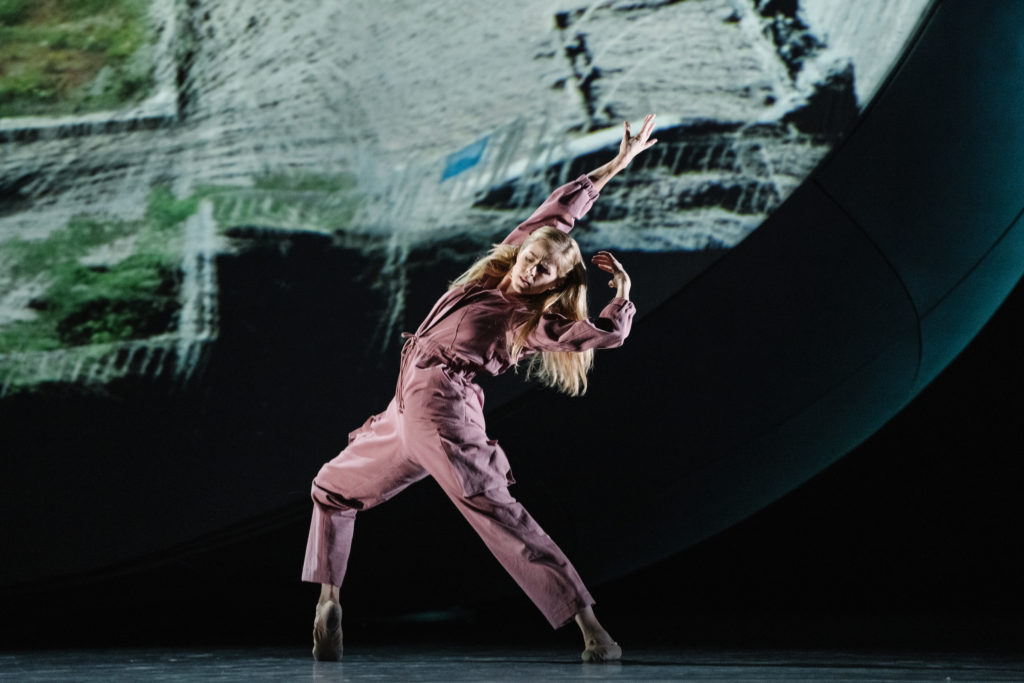Toronto’s welcome rush of live theatre - Vancouver Ballet Society
- Home
- City Reports 2020 - 2023
- Toronto’s welcome rush of live theatre

By Michael Crabb
The Toronto dance scene has sprung back to a close approximation of pre-pandemic normality with a welcome stampede of live performances by local and visiting artists. Dancer-choreographer Nova Bhattacharya was first out of the gate in September with the premiere of Svāhā!, a joyful work for an all-female 22-dancer cast. The title comes from the Sanskrit word for oblation, or offering, and the work itself can be seen as a ritual in which the performers, representing a diverse plethora of styles, coalesce in a glorious celebration of life and womanhood.
The fall season is always book-ended by The Nutcracker, whether in its lavish James Kudelka production for the National Ballet of Canada, Bengt Jörgen’s Canadianized version with designs inspired by the Group of Seven painters, or the Pia Bouman School’s community-based Nutcracker, arguably the best of Toronto-area amateur productions.

In between these seasonal events, there was a diverse range of offerings, from the small army of National Ballet School students deployed in Jera Wolfe’s commissioned Arise, part of Fall For Dance North’s Signature program, to the Brazilian-inflected moves of Life Under My Skin, Newton Moraes’ latest work, which celebrates his self-named company’s 25th anniversary. Drawing on its cast’s own experiences, Life Under My Skin highlights the often daunting challenges artists face in pursuing their vocation.

Karen and Allen Kaeja, co-founder-director-choreographers of Kaeja d’Dance, had hoped to mark their company’s 30th anniversary last year but the pandemic scuttled that plan. Instead, they named their 2022 return to live performance 31, a meaty program of new work. Karen’s TouchX explores the notion of touch — physical, emotional, and metaphorical. It featured a huge cast and a great deal of almost transparent plastic sheeting. Allen’s I am the Child of …, the company’s latest collaboration with University of Calgary theatre professor Bruce Barton, probes the often hidden impact of ancestry and how specific memories shape who we are, how we move through the world, and how we relate to others.
ProArteDanza returned to the stage in November with a bold program featuring new works by emerging choreographers Chantelle Good and Syreeta Hector, and the more established Vancouver-based Lesley Telford (for my money the one to watch). Company artistic director Roberto Campanella completed the program with a revival of his unrelentingly propulsive Fearful Symmetries from 2016, set to John Adams’ much-choreographed score of the same name.

The National Ballet of Canada, under new artistic director Hope Muir, launched its fall hometown season with an engaging triple bill highlighted by the company premiere of Alonzo King’s The Collective Agreement and a welcome revival — after a more than 30-year absence — of Kenneth MacMillan’s Concerto, an abstract envisioning of Shostakovich’s Piano Concerto No. 2 featuring two movements of high-octane ballet classicism sandwiching a dreamy, almost minimalist central pas de deux.
The work of King, founder-director of San Francisco’s 40-year-old LINES Ballet, is little known in Toronto, something Muir, an admirer, intends to change. As an introduction, The Collective Agreement reveals a choreographer who revels in geometric complexity and layers of suggested meaning, in this case the emergence of unity among a previously heterogeneous ensemble.

In terms of advance hype, the big event was the National Ballet’s November 23 world premiere of a three-act work that shouts its title in capital letters, MADDADDAM. Initiated by former artistic director Karen Kain and co-produced by London’s Royal Ballet, which will perform it at an unspecified future date, MADDADDAM is British choreographer Wayne McGregor’s audacious theatrical re-imagining of prolific Canadian writer Margaret Atwood’s grim, post-apocalyptic trilogy, Oryx and Crake (2003), The Year of the Flood (2009), and MaddAddam (2013).
Ironically, the COVID-caused two-year postponement only serves to reinforce the all-too-prophetic nature of Atwood’s alarm call about the perils of capitalism, corporatism, and environmental degradation run amok.
McGregor wisely avoids what would be the near impossible task of translating the books into movement. They are too complex and layered for that and a good part of their attraction lies in Atwood’s genius for assembling words. Instead, McGregor opts for an impressionist response to the trilogy’s shifting moods, multiple perspectives, and head-spinning plot twists.
After a rather cluttered first-act attempt to give a compressed summary of the overall plot, the ballet opens out into two further acts filled with wonderfully inventive choreography and culminating in an emotionally affecting conclusion in which a new race of hominid-like creatures picks up the torch for extinguished humanity.

In early November, Toronto said farewell to Claudia Moore, a luminous local presence for as long as most can recall. Moore and her husband have relocated to Kelowna, BC, where their daughter and her family live.
After a brief stint in the corps of the National Ballet of Canada, Moore redirected her career toward contemporary dance, became the muse of her first husband, dancer-choreographer Robert Desrosiers, then moved on to become an independent artist. Moore became known for a distinctively gestural, character-based choreographic approach she calls “body poetry.” Simultaneously, she explored her interest in cross-disciplinary projects embracing movement, text, music, performance art, and visual design.
Moore also founded her own company, MOonhORsE Dance Theatre. Its most prominent and enduring activity, Older & Reckless, highlighting the artistry of dancers 40-ish and up, began in 2000. It was supposed to be a one-off event but became a continuing series that is still going strong. MOonhORsE and O&R will continue under the artistic leadership of Toronto dance artist Allison Cummings. Moore, who turns 70 in April, says she has no plans to run another organization in Kelowna but concedes that she can’t imagine turning her back on dance. “I’m hooked for life,” she says.

